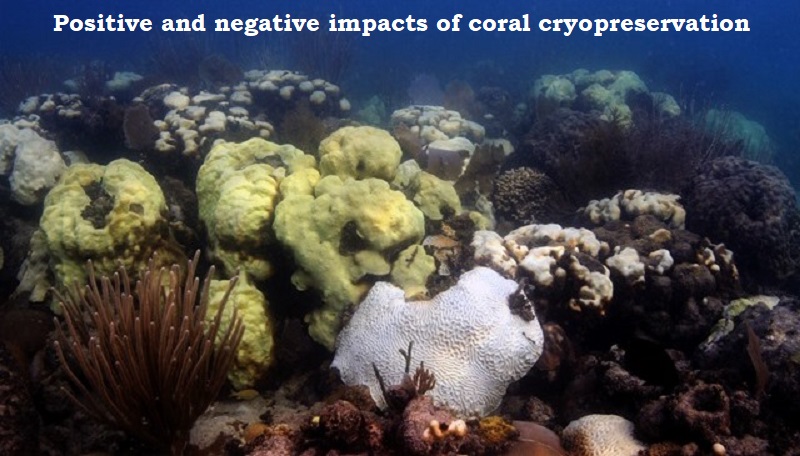
Cryopreservation of coral tissue or gametes (eggs and sperm) entails keeping them at extremely low temperatures, frequently using liquid nitrogen. The preservation of coral species’ genetic variety and the provision of a method for regenerating coral populations in the future are the two main objectives of coral cryopreservation.
Positive effects
Coral species’ genetic variety can be preserved by coral cryopreservation, which can help to secure the long-term survival of these species and the ecosystems they sustain.
Coral populations can be multiplied by coral cryopreservation, which can aid in repairing damaged reefs and supporting the regrowth of coral reefs.
Biodiversity: Coral reefs are home to a wide range of marine life, and they support the ecosystems that these species rely on. Coral cryopreservation can help to preserve the biodiversity of coral reefs.
Negative impacts:
Cost: Cryopreservation can be expensive, and not all coral reefs or coral species may be able to undergo the technique.
Limited success: Because cryopreservation is still a relatively new method, it is unclear if it will be effective for all coral species. There is a chance that not all coral species will respond well to cryopreservation, or that it won’t be able to retain all of a species’ genetic diversity.
Limited practical application: For many coral reefs, especially those that are situated in inaccessible or remote locations, cryopreservation may not be a viable option.
Ethical considerations: There are also ethical considerations to consider when it comes to cryopreservation, including questions about the role of humans in conserving and restoring natural ecosystems and the potential impacts on local communities and economies.

Post Your Comments